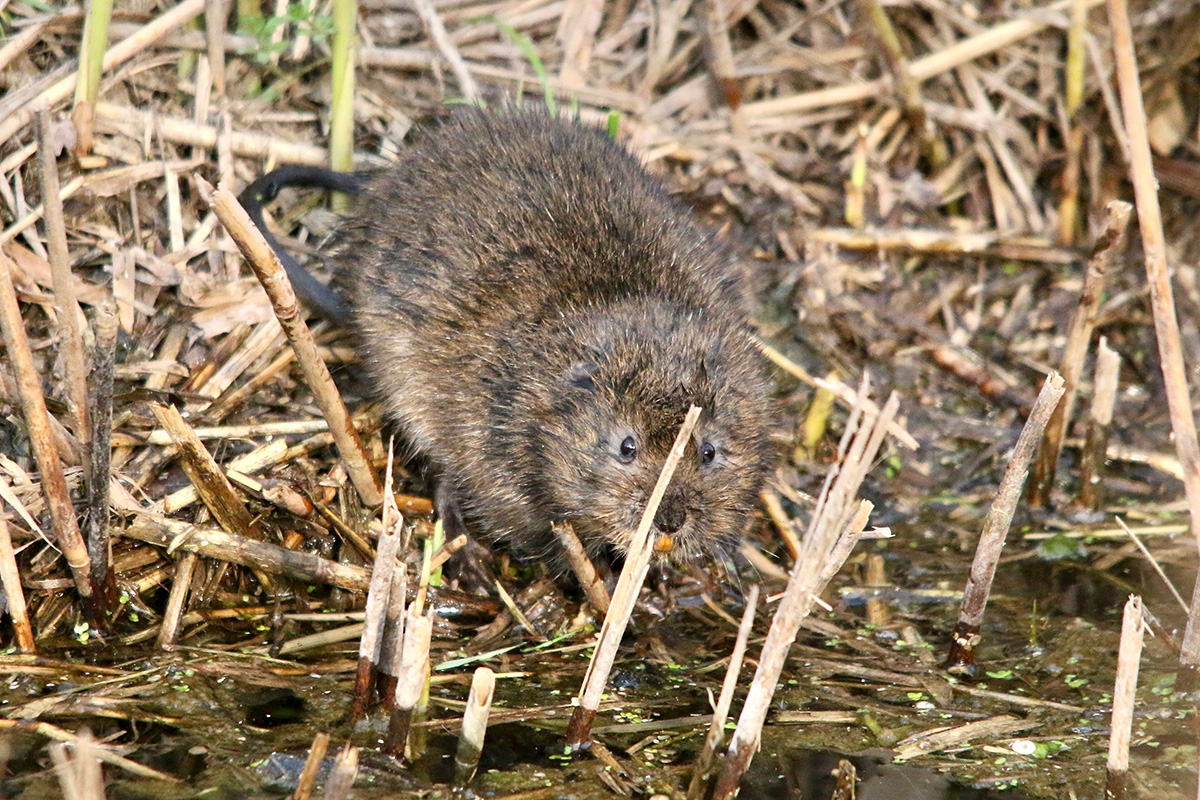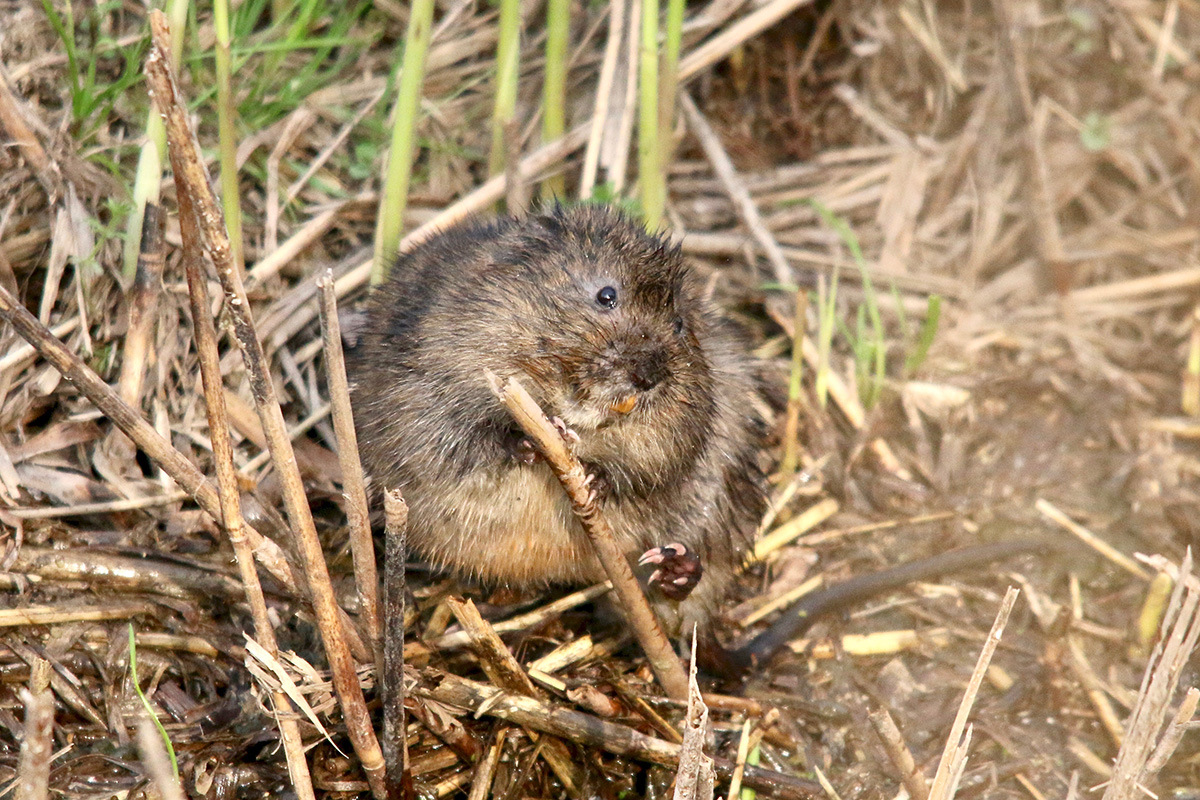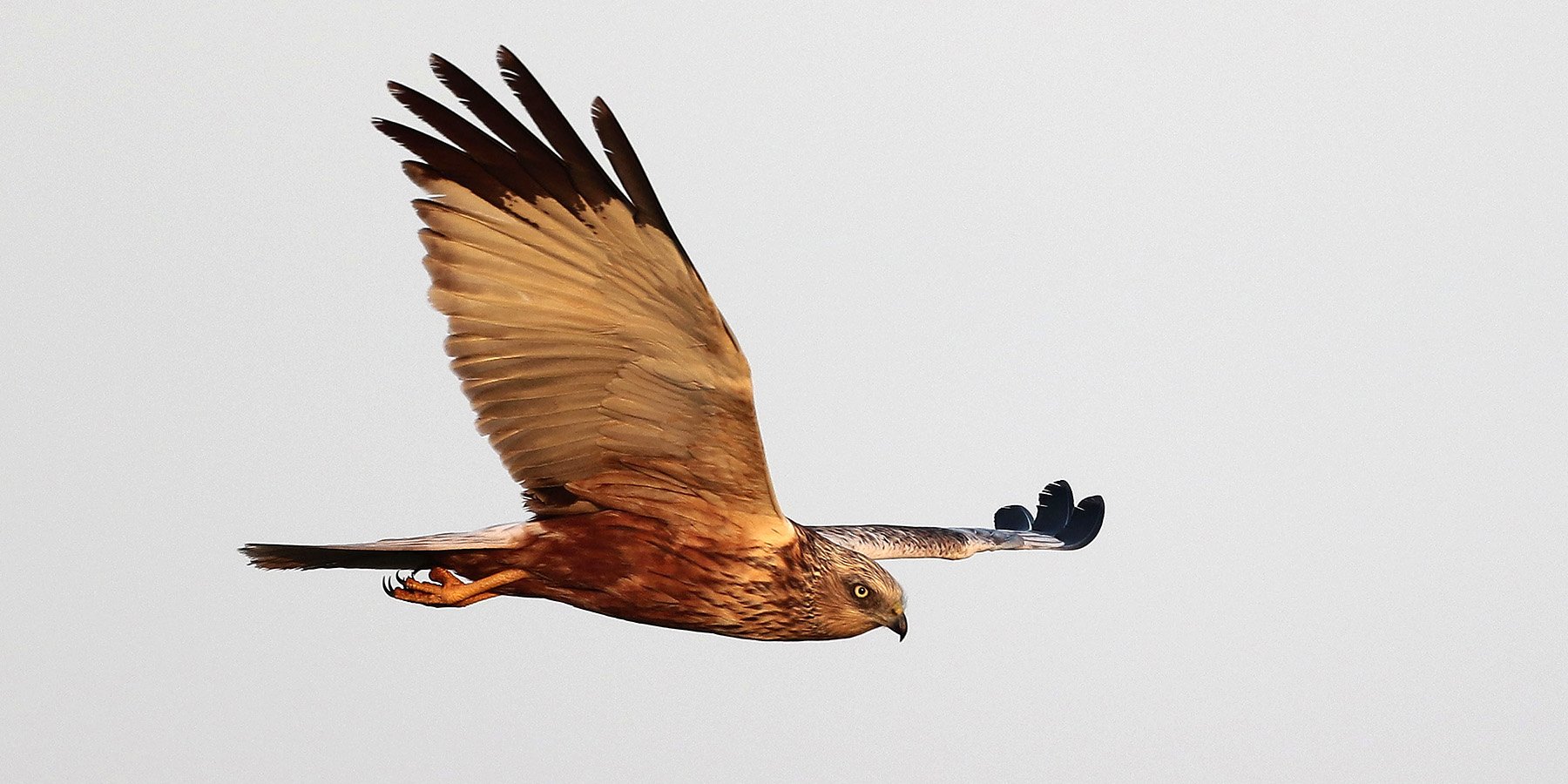The water vole, Arvicola amphibius, is Britain’s largest species of vole and an iconic wetland species. It lives along rivers, streams and ditches, around ponds and lakes and in marshes, reedbeds and areas of wet moorland.
Sadly, they are one of Britain’s fastest declining mammal species and have disappeared from around 94% of places where they were once common. Factors that have contributed to this dramatic decline include loss of habitat through intensification of farming practices, urbanisation, and development. Water voles are particularly vulnerable to predation by American mink, which were bought to Britain in the 1920s for fur farms, but which soon escaped into the wild. Female mink are small enough to fit into water vole burrows and can wipe out entire colonies.
After an absence of many years, water voles were reintroduced to the Gwent Levels in 2012/13. Gwent Wildlife Trust, working with Environment Agency Wales and the RSPB, released more than 200 specially bred water voles at its’ Magor Marsh nature reserve. Since then, they have spread westwards across the Levels using the network of drainage ditches and reens, reaching as far as Newport Wetlands. This successful reintroduction has been assisted by careful management of reens by Natural Resources Wales and active control of mink numbers.
Water voles are sometimes referred to as water rats (Ratty in Kenneth Grahame’s The Wind in the Willows was a water vole), although they are not closely related to rats and are easy to tell apart with a bit of practice. Water voles have a rounded face with a blunt nose, small ears, brownish-black fur and a short, lightly furred tail. Rats have a pointed face, with large pink ears, grey-brown fur and a long, pink, scaly tail. Water voles can grow up to 20cm, with a 10cm tail, and can weigh up to 300g.
They are mostly vegetarian. Their diet consists of around 200 different kinds of plants, mainly sedges, rushes and grasses, and they need to consume about 80% of their body weight each day. They do not hibernate, so during the autumn and winter they feed on roots, fruit and tree bark. Very occasionally they eat insects and other invertebrates.
Water voles are semi-aquatic and will not usually stray more than a few metres away from water. They make their burrows along banks, often with an exit hole next to the water’s edge for quick get-a-ways. Burrow entrances are tennis ball-sized, with an area of neatly cropped vegetation in front. Their feeding and burrowing activities helps to create microhabitats for other plants and animals.
Like other native animals, such as badgers, water voles create latrine areas, where they leave their ovoid green or black droppings. These latrines are used to mark the edge of a vole’s territory and can be used to estimate the number of voles in an area; four to five latrines can be equated to one breeding female.
Water voles normally breed between April and October, when conditions are optimum, and have two or three litters, each of up to eight pups. Adults rarely live longer than two years and in harsh winters populations can decline by 70%. In addition to having a naturally short life-span, water voles are prey for a wide range of native animals, including otters, owls, kestrels, herons and pike.
Record your sightings
Think you’ve seen a water vole? It’s important to record wildlife sightings with South East Wales Biological Recording Centre, which stores, manages and shares wildlife records from across the region. Follow the link below to find out how to record sightings.
Where to see…
Magor Marsh SSSI (Gwent Wildlife Trust)
What to look for…
You may be lucky enough to see adult water voles swimming or feeding on bank-side vegetation. Otherwise, look out for:
Neat piles of nibbled vegetation with all the ends cut at a 45 degree angle.
Feeding rafts - small piles of cut vegetation large enough for the voles to sit on.
‘Lawns’ near to burrows, where the vegetation has been cut extremely short by grazing voles.
Water vole latrines with distinctive ovoid green or black droppings (tic-tac size and shape).
Round, tennis ball-sized, burrow entrances in banks next to water.
Helping water voles on your land
PTES (People’s Trust for Endangered Species) have produced a free guide for landowners who want to encourage water voles by improving habitat.











